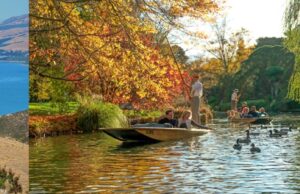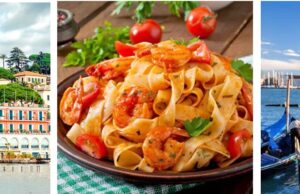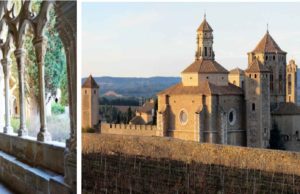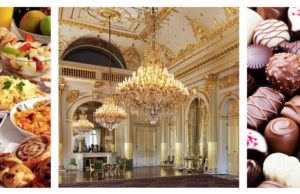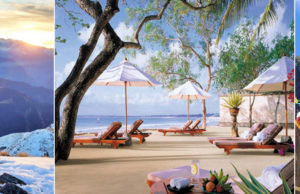
WoT's Hot
This is a reprint of an article appearing on QuirkyCruise.com (http://quirkycruise.com/), the world’s best guide to small ship cruising.
I finally managed my first visit to Myanmar and its Irrawaddy River to see some of the country’s tens of thousands of Buddhist monasteries, shrines, temples and stupas. I wasn't disappointed.
My friend Sheila and I booked a 7-night river cruise between Bagan and Mandalay aboard Pandaw River Cruises’ new 40-passenger Kalaw Pandaw. The sturdy 10-to 60-passenger teakwood boat with brass fittings is a replica of 19th-century Scotland-built Irrawaddy River paddle steamers with flat tops that allow them to slip under bridges and easily traverse remote rivers.
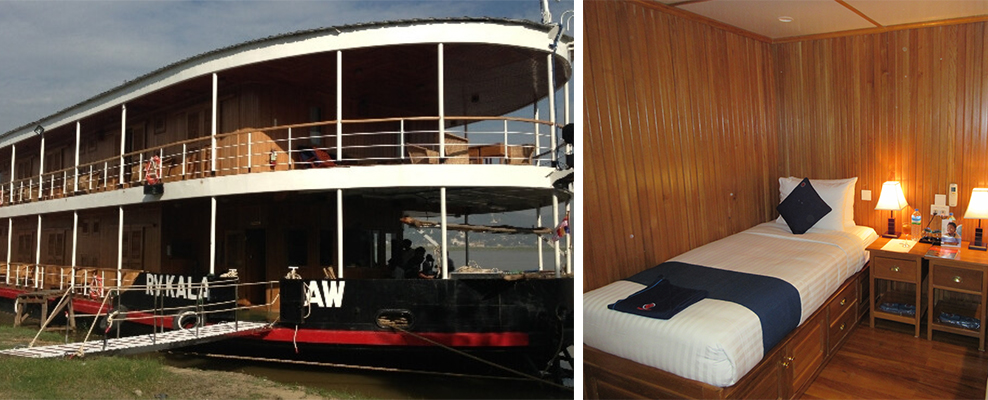
We flew into Mandalay and it was a four-hour drive to Bagan, where we walked down the dry banks of the Irrawaddy River, past a gauntlet of children selling bracelets and necklaces, to board the boat. A crewmember at the gangway took our shoes and cleaned them, while another handed us a cold drink and a refreshing face towel to wipe our sweaty brows.
With the boat tied up to tree trunks or stakes banged into the earth, daily life on the riverbanks was never more than a few feet away. The scent of wood-smoke hung in the air as women washed clothes along the river’s edge slapping them onto stones and oblivious to litter strewn about. The all-day soundtrack was a medley of roosters crowing, monks chanting into microphones and skiffs rattling past with shrieking outboard motors. Welcome to the real Myanmar, a country in transition, albeit at the very beginning.
Our Bagan-Mandalay Packet itinerary included two days on board at both ends and three days sailing the 110 miles of river in between, with nights moored along the banks. When tied up in Bagan and Mandalay, the captain would cruise up and down the Irrawaddy River at breakfast and dinner time to generate a welcome breeze for those outside on deck and offer more time to gaze at the pagoda-dotted landscape.
A local tour guide sails on board every Pandaw cruise and ours was San, a former teacher and a walking encyclopedia of Myanmar history and culture.
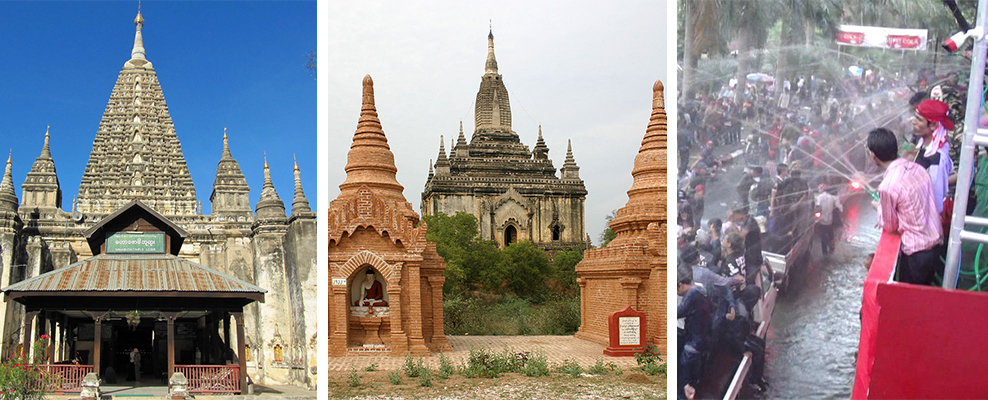
A Sea of Pagodas, Days 1 & 2
Bagan’s 2,000+ pagodas were just a 10-minute bus ride from our mooring, and it was like driving through a safari park, only the animals were ancient red brick monuments. They date back to Bagan’s Golden Age in the 11th to 13th centuries, when they were originally covered in stucco and gold leaf. Some looked similar to Egyptian pyramids, like the Dhammayangyi temple, while others such as the Mahabodhi temple looked more Indian, and the Thatbyinnyu and Shwegugyi temples conjured up Europe’s Gothic and Romanesque cathedrals.
Villages Along the Way, Day 3
After two days in Bagan, we cruised upstream to Pakokku. On route to the town’s local markets, where we saw women stirring up batches of thanakha, the traditional Myanmar face paint made from tree bark, we gained a keen understanding of the meaning of Thingyan, the annual Buddhist New Year Water Festival. As we traveled in a convoy of open-air tuk-tuks to the town, we were enthusiastically doused with hoses and buckets of water from smiling locals. Some of us purchased squirt guns to join in the fun and the water fights in the ensuing days turned out to be a great way to interact with the locals.
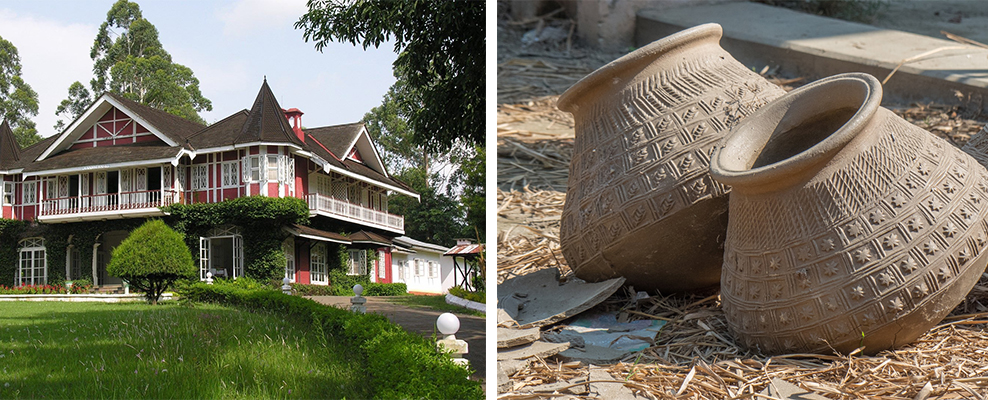
Day 4
On the fourth day, we sailed along the Irrawaddy River to Yandabo to visit a rural homestead where terracotta pottery is made. San took us into one home where the family shared tea and corn on the cob, making us feel like friends, not tourists.
Day 5
The next day, it was a two-hour bus ride up to a quaint and noticeably cooler British Colonial hill station called Pyin Oo Lwin, or Maymyo. We passed mango orchards, rice fields, banana plantations and large humped white cows pulling ancient farm equipment through the earth. Though we did see young people in Mandalay clutching cell phones and clad in skinny jeans, for the most part Myanmar is still steeped in the past; large swathes of the country don’t have electricity and most men and women still wear traditional sarongs and paint their faces with thanakha.
We lunched in classic colonial bungalow housing a restaurant, drove past the old British Club and spent an hour walking around the town’s Botanical Gardens, dodging the occasional bucket of water hurled in our direction. San told us many things on the bus ride, including the fact that Ruyard Kipling, author of the well-known poem Mandalay, had never actually been to Mandalay, or Bagan or Yangoon for that matter. He only briefly visited Moulmein along the southeast coast, but yet for much of the world Kipling put Myanmar on the map.
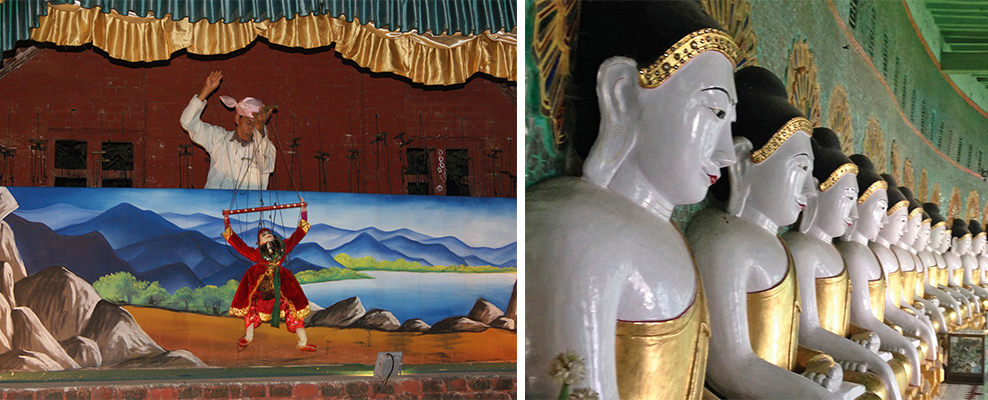
Back in Mandalay, Days 6 & 7
The sixth day was spent exploring Sagaing, a hill on the outskirts of Mandalay covered in Buddhist monasteries, shrines and sanctuaries, and other nearby sites, from the rustic teak wood Shwe Nan Daw Kyaung monastery to the gleaming Mahamuni Pagoda covered in millions of squares of gold leaf (that only men are allowed to apply), and the massive ruins of the Mingun pagoda (some calling it the biggest pile of bricks in the world). Then, by horse-drawn carriages, it was more of the same in the ancient capitals of Ava and Amarapura. My favorite place of them all was the hilltop U Min Thone Se Pagoda, also known as the Temple of 45 Buddhas, with its arc of white stone Buddhas in golden robes set beautifully in a hall of green tiles.
When we weren’t on shore, Sheila and I favored the deck chairs at the bow with a glass of refreshing Myanmar beer in hand as we gazed at the gold and white peaks of stupas carpeting the landscape. Later, a group of us would meet at the bar at happy hour to sample the daily cocktail specials, moving to our tables only when summoned by the dinner gong. Meals incorporated local ingredients and we especially enjoyed the chicken breast stuffed with tealeaves, acacia tree tempura, prawn curry, and Asian soups. One evening after dinner there was a traditional puppet show and on another a dance performance, but otherwise it was a nightcap on deck or retiring early to our cozy air-conditioned cabin to rest up for the next day’s adventures. There were, thankfully, no TVs to distract us. Pandaw founder Scotsman Paul Strachan has always kept the focus on the destination.
My Myanmar cruise was my third Pandaw river journey — the first was on the Mekong in Cambodia and Vietnam, and the second on Borneo’s Rejang River — and I’m already looking forward to the fourth, probably in the cooler, lusher months of October or November. I’m thinking Laos or maybe India, on the Brahmaputra. Let’s see.
Tips
Fares include meals, excursions, bottled water, and local soft drinks, beer and spirits. For more info click here for QuirkyCruise's Pandaw line review or go to www.pandaw.com.
If you need to stay connected with the world, definitely buy a local SIM card for your phone as Internet connections in Myanmar are super weak (and often non-existent) on board and off.
Bring plenty of US dollars, ATMs often don’t work; Visa and Mastercard are accepted in big hotels and shops, but American Express is not. At local markets, Burmese Kyat is necessary, though souvenir hawkers at the major tourist sites happily take US dollars if they are crisp (faded, torn or written-on currency will not be accepted).
Heidi Sarna is a prolific travel writer with an expertise in small-ship cruises. For a full version of the text check out her site http://quirkycruise.com/pandaw-irrawaddy-river-cruise/, which is an excellent resource dedicated to small ship cruises under 300 passengers and the world’s best guide to small ship cruising.
This is a reprint of an article appearing on QuirkyCruise.com (http://quirkycruise.com/), the world’s best guide to small ship cruising.
I finally managed my first visit to Myanmar and its Irrawaddy River to see some of the country’s tens of thousands of Buddhist mon
What to read next
Featured articles

Welcome Festive Season in Glam, Latin Quarters Launches new #PujoBling Collection with Monami Ghosh
by WOT




































